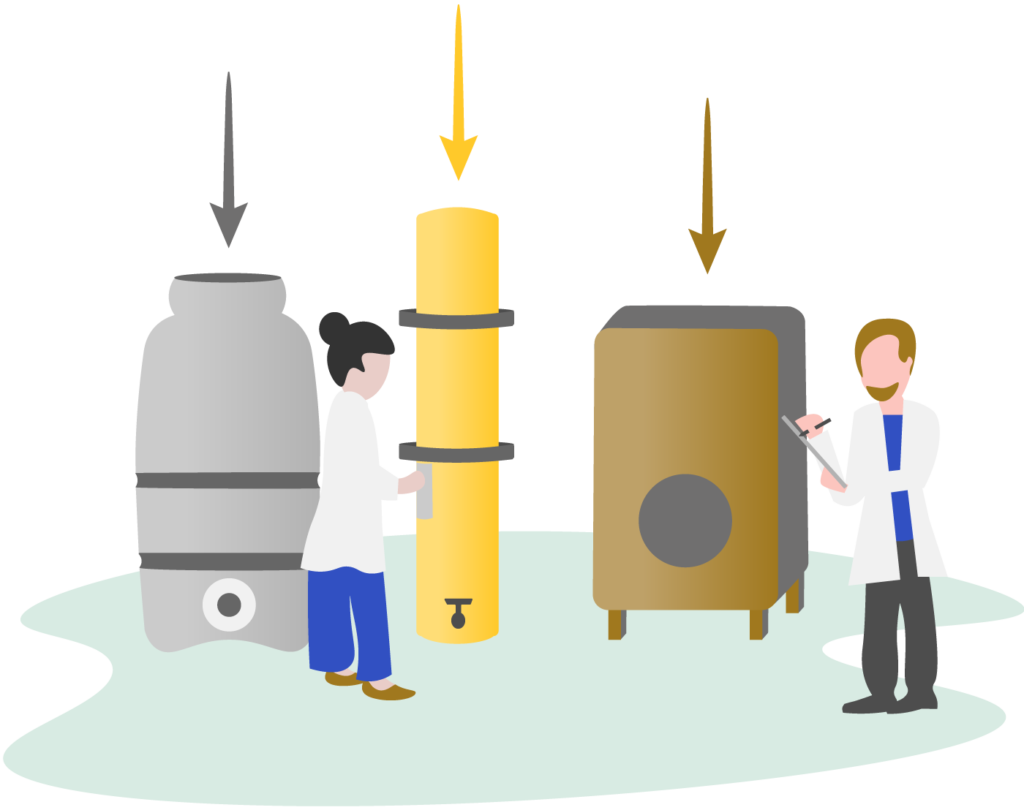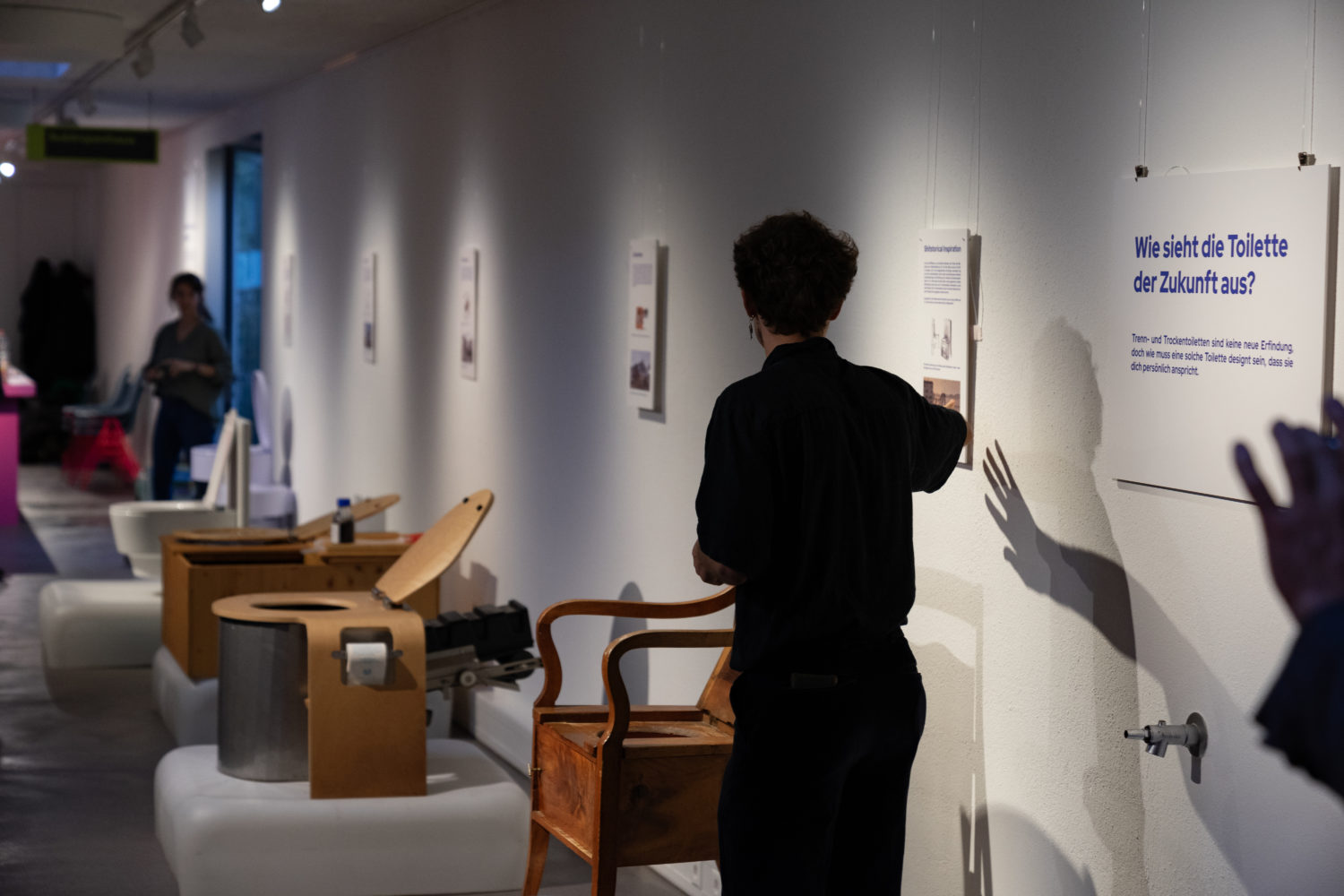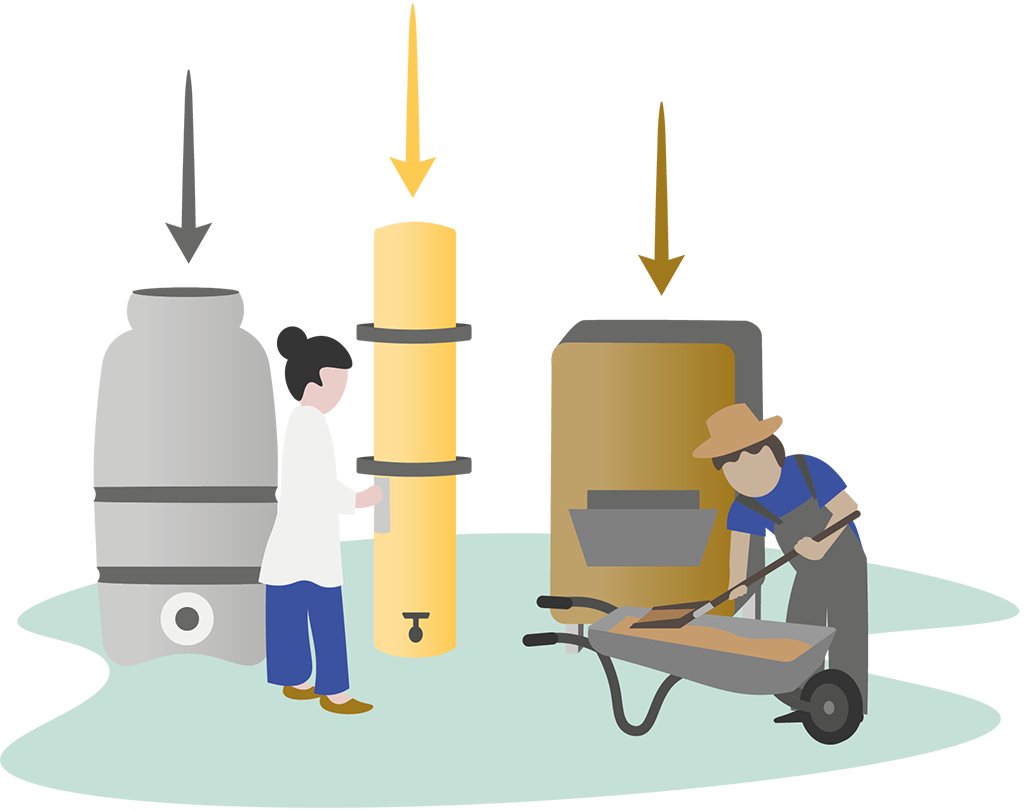Sammeln & Aufbereiten

Für viele Menschen endet die Auseinandersetzung mit dem Thema Abwasser beim Betätigen der Toilettenspülung oder bei der Entfernung von Haaren aus dem Abfluss. Diese Einstellung wird als «Flush and Forget» bezeichnet: Spülen und vergessen [1]. Eine Errungenschaft von gereiften Industrienationen? Zweifelsohne haben Schwemmkanalisation und die zentrale Abwasserreinigung im Hinblick auf Gesundheit, Lebensqualität und Umweltschutz enorme Verbesserungen bewirkt [2]. Es gibt allerdings auch Anzeichen dafür, dass diese Art der Abwasserreinigung verschiedene Limitationen hat [3]. Doch was ist eigentlich Abwasser? Welche Risiken birgt es? Um diesen Fragen nachzugehen, hilft es, den Blick etwas zu öffnen, vom Verständnis von Abwasser als Abfall wegzukommen und Ressourcen und vor allem Ressourceneffizienz ins Zentrum zu rücken. Denn was die Toilette runtergespült und im Spülbecken versickert, sind wertvolle Nährstoffe, Energie und vor allem viel Wasser!
Möglichkeiten der Abwasserbehandlung
Neben Nährstoffen und Energie beinhalten Abwasser auch Krankheitserreger wie Bakterien, Viren und Parasiten und eine steigende Konzentration an Mikroverunreinigungen (beispielsweise durch Arzneimittel, Hormone und Biozide). Durch eine Behandlung von Abwasser wird Wertvolles von Schädlichem getrennt. Ersteres wird für die Weiterverwendung aufgewertet und Letzteres deaktiviert und eliminiert. Dabei soll möglichst wenig Energie aufgewendet und Emissionen von Schadstoffen und Treibhausgasen weitgehend vermieden werden. Bei der Erfüllung all dieser Aufgaben stossen zentrale Abwasserreinigungsanlagen immer mehr an ihre Grenzen [4]. Insbesondere die Rückgewinnung von Nährstoffen gestaltet sich aufwendig und ressourcenintensiv, wenn sie zentralisiert und nach einer Vermischung von unterschiedlichen Abwasserarten im Klärschlamm angegangen wird. Auch die hohen Mengen von Spülwasser (in der Regel Trinkwasserqualität), die Voraussetzung sind für einen zuverlässigen Betrieb der Schwemmkanalisation, werden bei zunehmender Wasserknappheit zum Problem.
Dezentrale Behandlung als Alternative
In Kombination mit Trennung an der Quelle bieten dezentrale, also nahe an der Quelle zum Einsatz kommende, Behandlungsverfahren in diesem Zusammenhang verschiedene Vorteile:
- Die getrennten Ströme (gelb, schwarz, grau) sind weniger komplex in ihrer jeweiligen Zusammensetzung, sodass spezifische und sehr effiziente Verfahren angewendet werden können.
- Durch die Vermeidung von langen Transportwegen und Aufbewahrungszeiten können biologische Prozesse verhindert und damit verbundene Emissionen vermieden werden.
- Kreisläufe für Wasser und Nährstoffe können vor Ort geschlossen werden.
- Basierend auf modularen Teilsystemen können neue Schnittstellen genutzt, weitere Stoffströme (bspw. Regenwasser oder Bioabfall) integriert und so der Umgang mit Ressourcen ganzheitlich angegangen werden.
Auch von einem wirtschaftlichen Standpunkt aus kann ein dezentrales, modulares (Ab-)Wassermanagement attraktiv sein. Dabei geht es nicht darum, eine vorhandene, kanalisationsbasierte Abwasserreinigung komplett zu ersetzten. An entlegenen Orten, bei schnellem Siedlungswachstum oder bei fehlendem Investitionskapital können dezentrale Lösungen kosteneffizienter sein. Die Voraussetzung dafür ist, dass die dazu notwendige Technologie für die spezifischen Behandlungsverfahren, standardisierbar und nicht zu komplex ist, so dass sie auch reguliert und geprüft werden können.
Dezentrale Behandlungsverfahren für getrennte Abwasserströme
Für die dezentrale Behandlung von Gelbwasser, bzw. verdünntem Urin, stehen heute bereits verschiedene, erprobte Verfahren zur Verfügung [5]. In der Regel wird dabei in einem ersten Schritt der Urin stabilisiert (z.B. durch Nitrifikation oder starke Erhöhung des pH-Wertes) und in einem zweiten Schritt das Substrat aufkonzentriert (Destillation, Verdunstung). Weitere Zwischenschritte existieren, um Medikamentenrückstände auszufiltern. Krankheitserreger werden durch eine gezielte Erhöhung des pH-Wertes oder durch Erhitzung (während der Destillation) deaktiviert. Ziel dieser Verfahren ist es, ein für Landwirtschaft und Gartenbau zulässiges Düngemittel herzustellen [6].
Auch für die dezentrale Behandlung von Grauwasser existieren bereits erprobte Technologien, die von einfachen passiven Anwendungen wie Pflanzenfiltern bis hin zu komplexeren Verfahren mit Ozonbehandlung und Remineralisierung für die Aufbereitung von Wasser mit Trinkwasserqualität reichen [7].
Zur Vor-Ort-Behandlung von Schwarz- / Braunwasser sind bis jetzt am meisten Erfahrungen mit biologischen Verfahren (Kompostierung, Wurmkompostierung, Stabilisationsbecken) gesammelt worden. Hier ist vor allem entscheidend, welche Spülwassermenge für den Transport und die Verarbeitung des Schwarzwassers eingesetzt wird. Ein Extremfall sind dabei Trockentoiletten, bei denen kein zusätzliches Wasser zum Einsatz kommt. Bei herkömmlichen Spültoiletten kann hingegen von einem Mengenverhältnis von Wasser zu Fäkalien von >20 ausgegangen werden. In diesem Fall kommt in der Regel ein fest-flüssig Trennverfahren zum Einsatz, gefolgt von unterschiedlichen Verfahren für die getrennten Ströme. Aufgrund der hohen Konzentration von organischen Verbindungen kann Schwar- / Braunwasser auch energetisch genutzt werden. Die in den Fäkalien gespeicherte Energie kann als Prozesswärme im Behandlungsverfahren (z.B. Sterilisation) oder als Heizwärme für ein Gebäude verwendet werden [8].
Text: David Hasler
Überarbeitung: Dorothee Spuhler, Gina Marti
Referenzen
News zu Sammeln & Aufbereiten

Event
19.11.2024 |
Stadtgärtnerei
Welttoilettentag & Finissage

Event
09.11.2024 |
Stadtgärtnerei
Martinimarkt

Event
18.10.2024 |
Lidernenhütte
Alpine Abwasseraufbereitung: Exkursion

Event
21.06.2024 |
Trub


